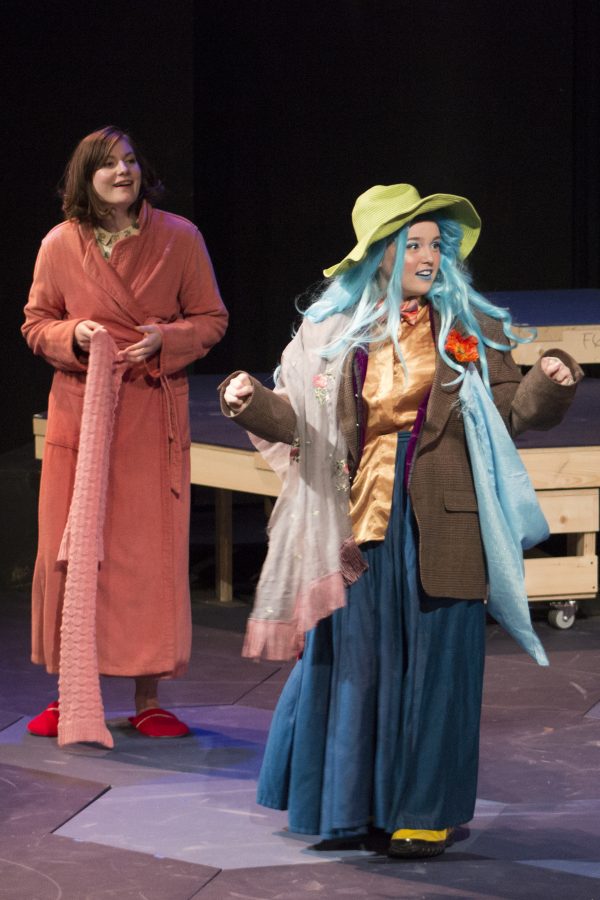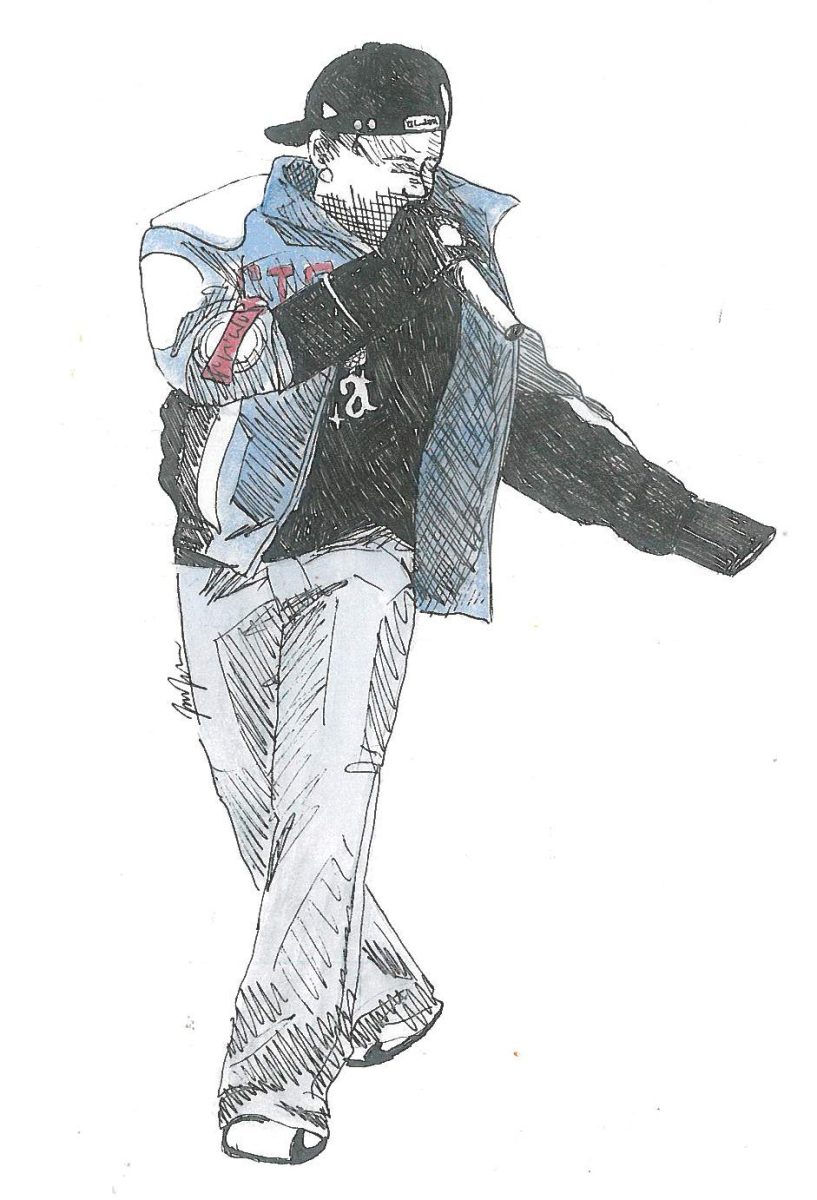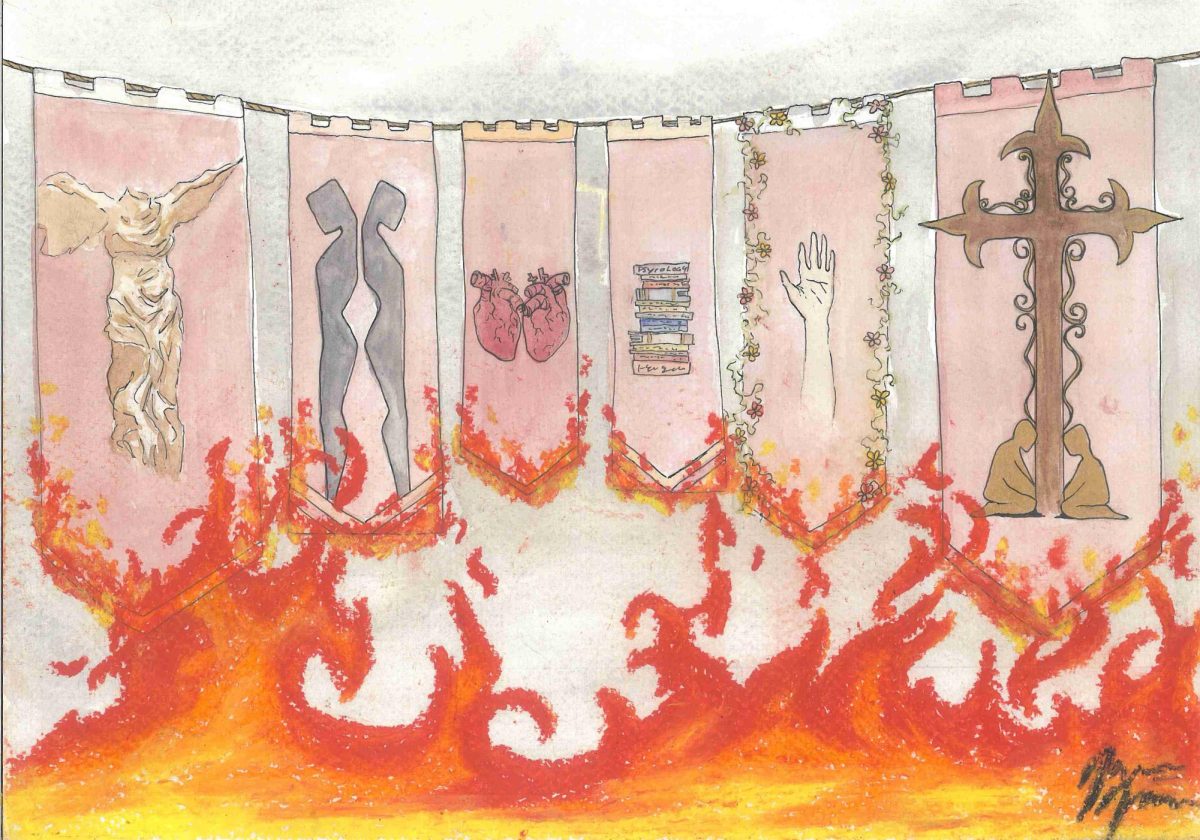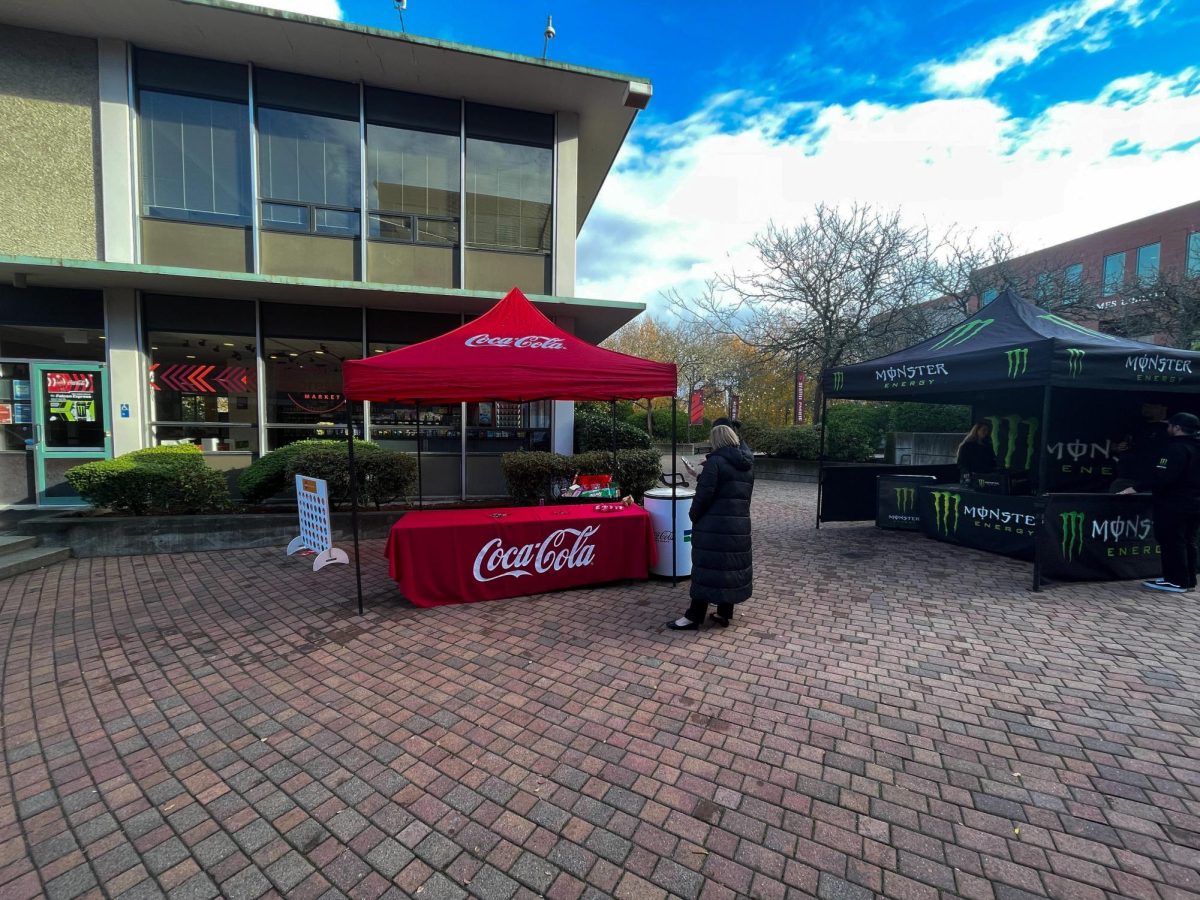A Wrinkle In Time’ confusing but meaningful
The year is 1962. The location is earth and the planets beyond.
The lights fade in to reveal the cast, staggered around the stage with an open book in their hand, chanting the line, “It was a dark and stormy night.”
This sense of eeriness and mystery hung over the crowd throughout the entirety of the Seattle Pacific University theater department’s production of “A Wrinkle in Time.”
Although at times confusing, the play greatly benefits from an intriguing plot and convincing performances.
In the end, the audience is left with a strong message: it is alright to be a little strange.
The play, based on a popular fantasy book by Madeleine L’Engle and adapted for the stage by Tracy Young, follows young Meg Murry, Charles Wallace Murry and Calvin O’Keefe as they journey through time and space to find Meg and Charles’ missing father. The characters all share one thing in common: they are different.
While the play follows a complex plot line involving space travel and dark forces, there are plenty of light-hearted moments sprinkled throughout the show. Oftentimes, however, the laughter came from the creative decisions the crew had to make in the costuming department.
A person in a dog costume on all fours, an oversized head with glowing eyes and a four-armed beast with a surprisingly haunting face, garnered unintentional laughs from the audience.
Many of the fantastical elements of “A Wrinkle in Time” were hard to replicate on a small stage, but other scenes executed that fantasy well.
As the characters traveled through space, strobe lights flickered to pull off the illusion, creating a mystical effect as characters sway back and forth.

One scene, in which the characters arrive on a bleak, dystopian planet, perfectly captures the mystery and fear of the situation as the characters find themselves confronted by an Orwellian society. Identically dressed characters move in synch as robotic voices urge the characters to conform to societal norms.
These brilliant scenes, however, come after a rushed first half in which the audience is not given time to figure out what is happening before being whisked into space.
At one moment, Meg Murry and Charles O’Keefe find themselves in a garden, stumbling through a rushed romance filled with tired tropes. Within a few seconds, however, they are surrounded by Charles Wallace Murry and two strange women before being suddenly whisked through time.
“That was quick, you might have warned us,” Charles Wallace Murry said after they reappear, although the line also represents the quick plot development as the story kicks into hyperdrive to make it through the rest of the hour and a half performance.
But while the play suffers from hustled moments and confusing developments, it is still a well-done production with a thoughtful theme at its heart.
Each character must learn to accept their faults, and find joy in their differences.
Overall, “A Wrinkle in Time” is a fantastical journey through time and space that often feels like a weird hallucination mixed with a short college theater production.
In the final moments, however, the play ends with the same sense of mystery that it began with.
It was, after all, another dark and stormy night.




















































































